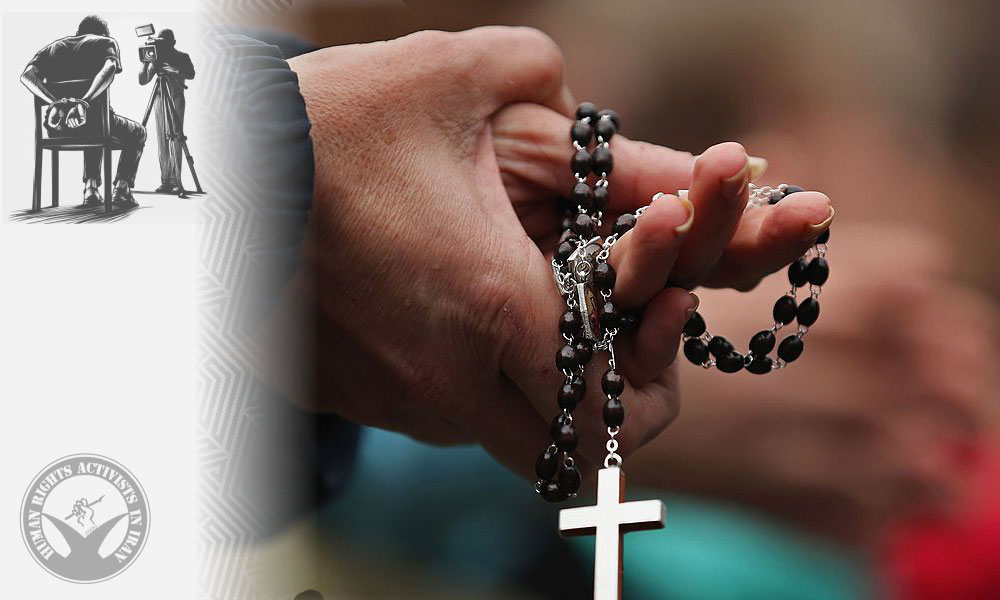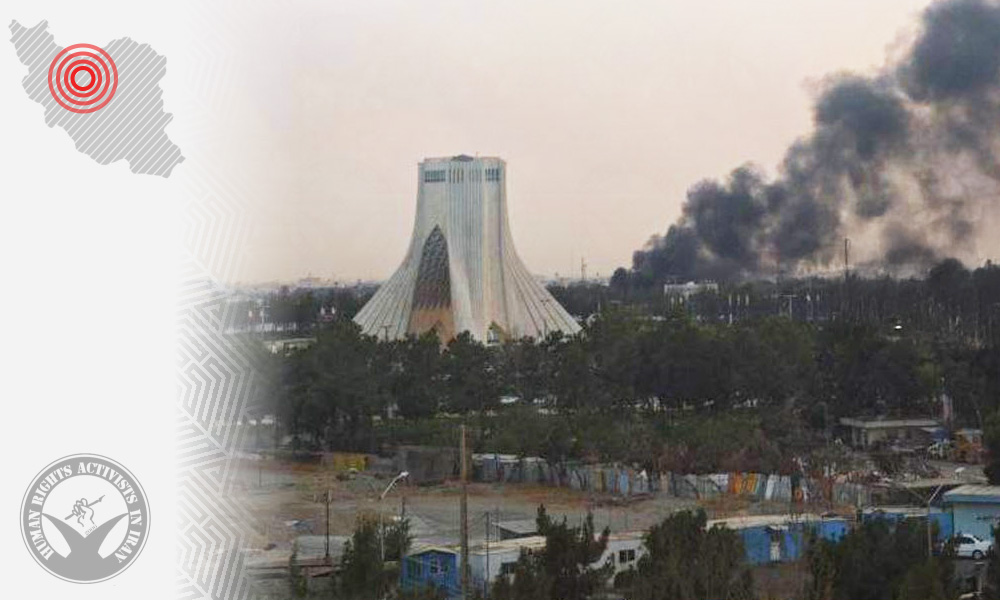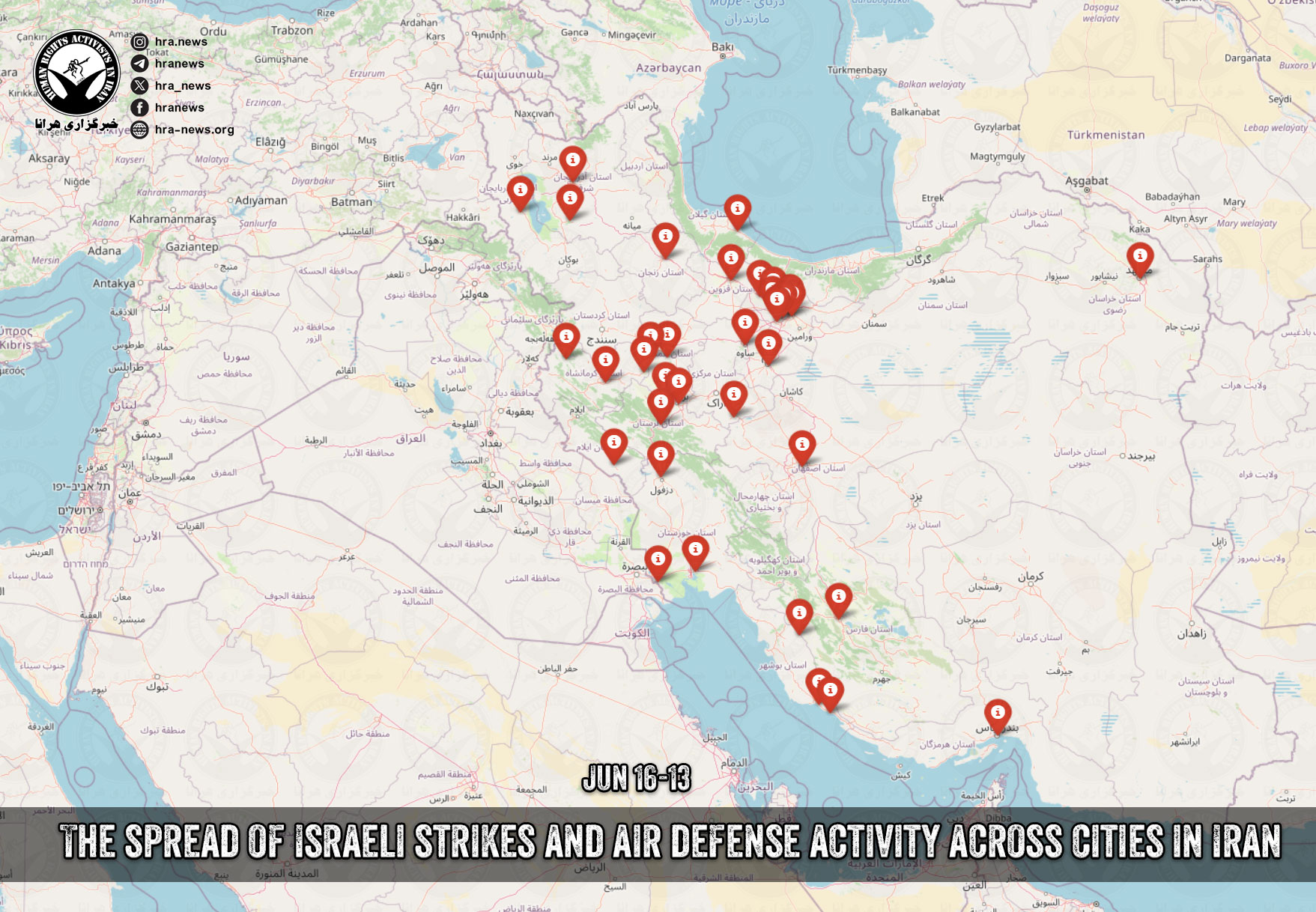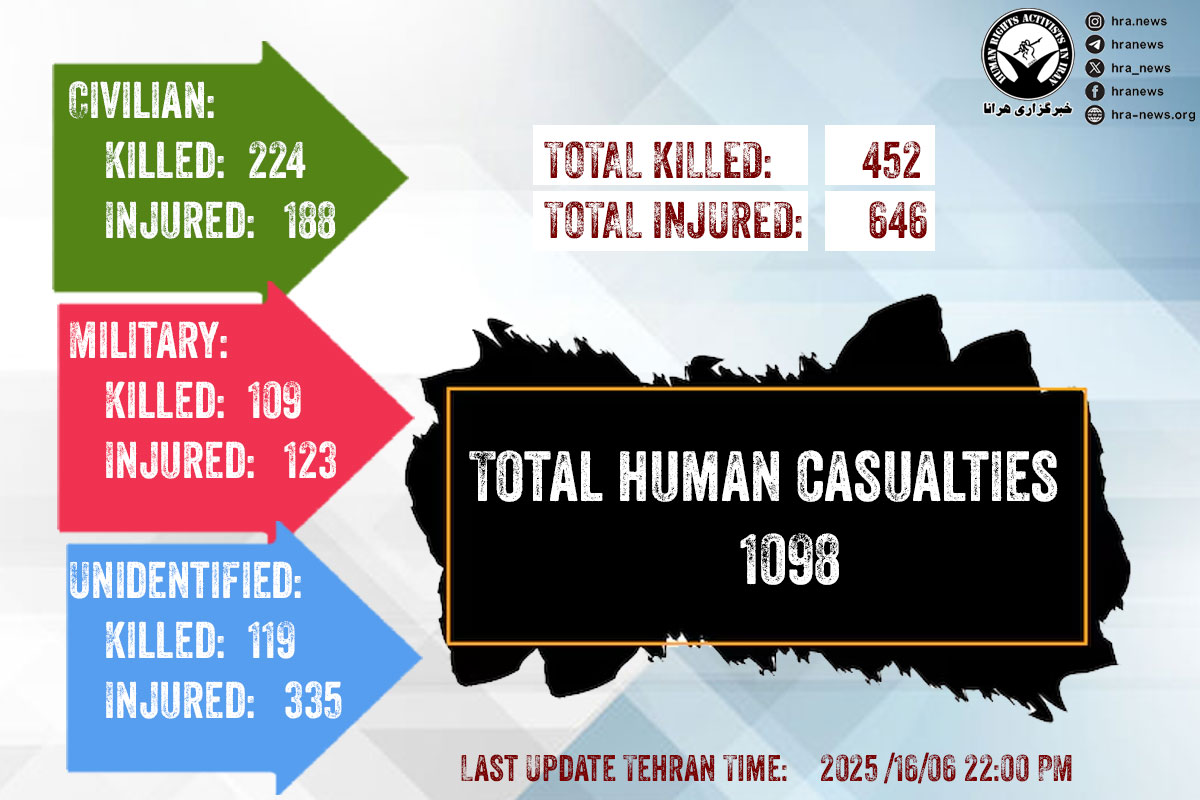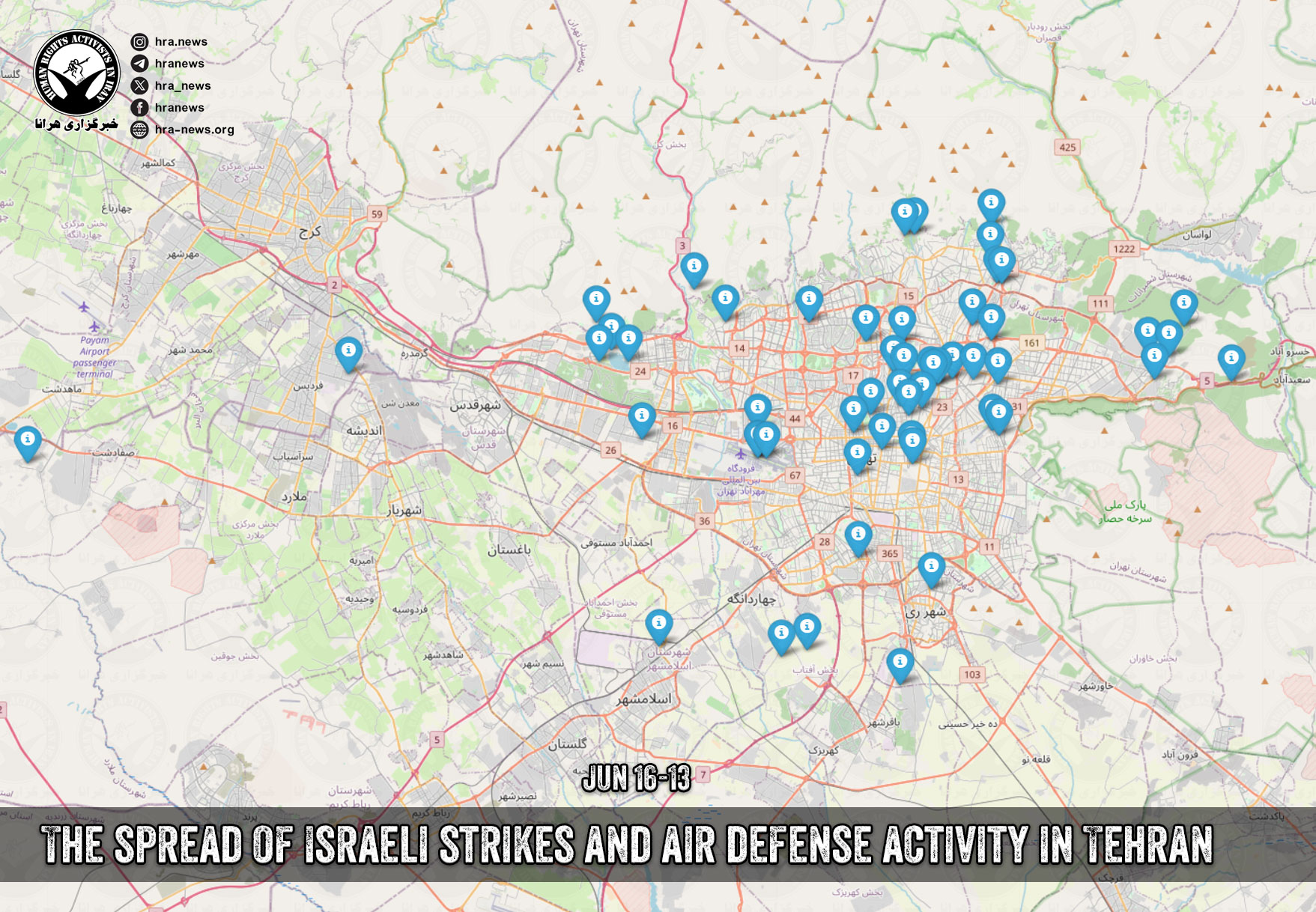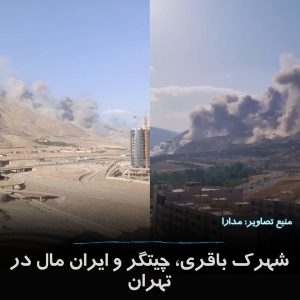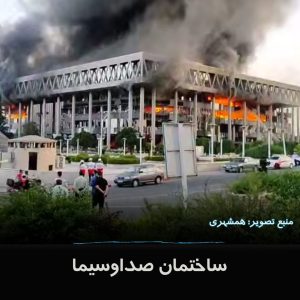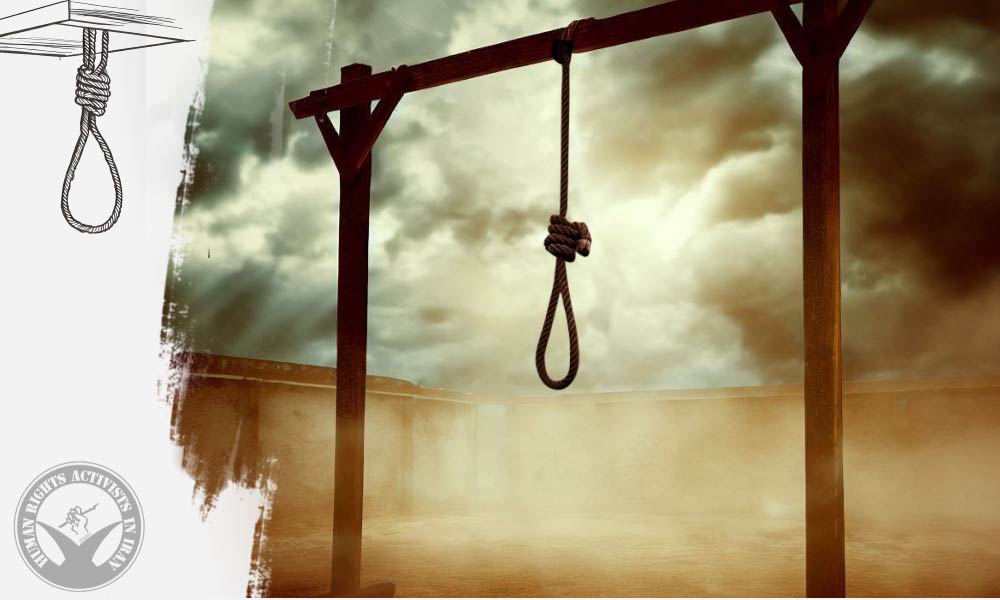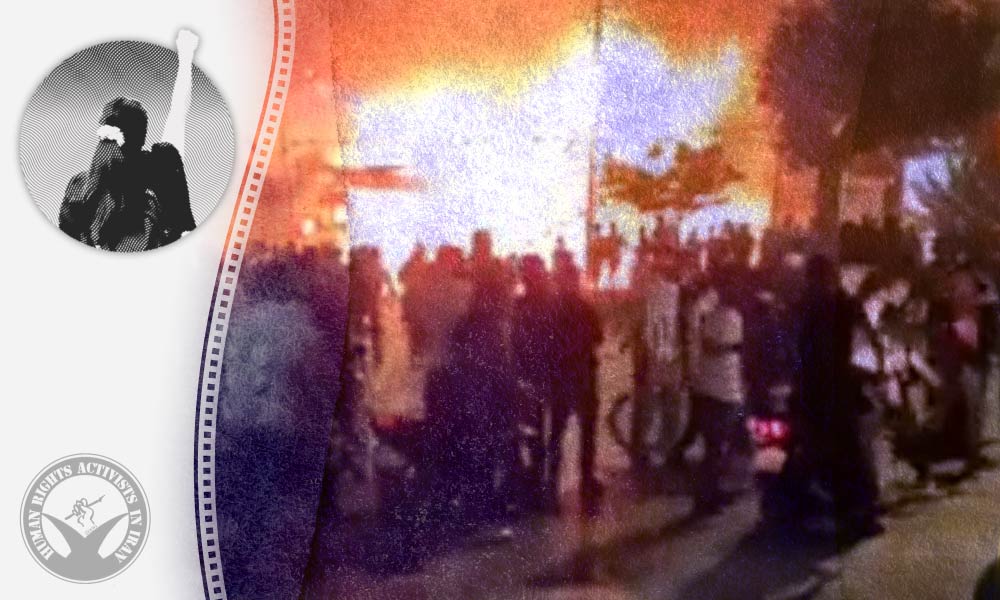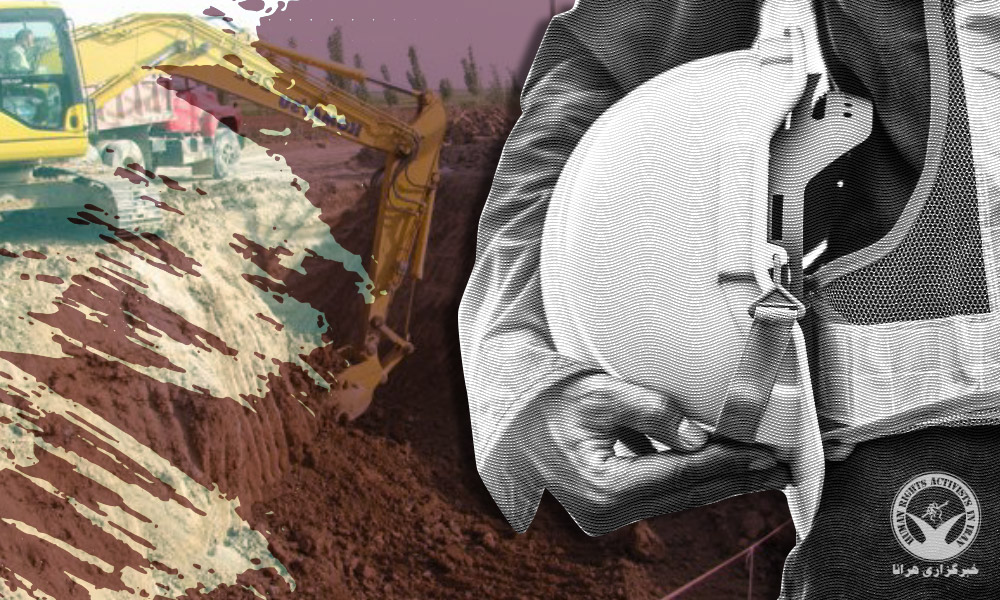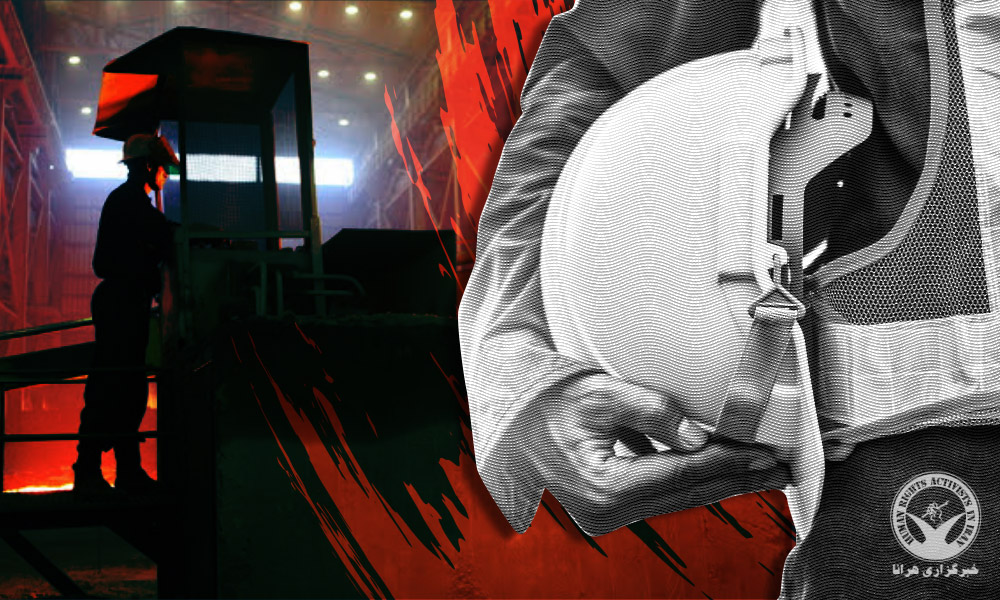HRANA News Agency – Yesterday, Friday, June 20th, marked the eighth consecutive day of military clashes between Iran and Israel. Since the onset of the conflict, attacks have spread across 25 provinces in Iran. The total number of casualties has reached 3,268, including 722 fatalities and 2,546 injuries.
Geographical Scope and Timeline of Events
According to documented data on the Israeli attacks against Iran, during the first seven days of clashes (June 13th to June 19th), the strikes covered a wide geographical area, hitting multiple regions across the country. Targets included infrastructure, military and civilian facilities, residential neighborhoods, and industrial sites. Over the past week, the following provinces have been directly affected:
Tehran, East Azerbaijan, West Azerbaijan, Ardabil, Isfahan, Ilam, Kermanshah, Markazi, Hamedan, Fars, Khuzestan, Kurdistan, Alborz, Zanjan, Bushehr, Qazvin, Gilan, Hormozgan, Qom, Razavi Khorasan, Chaharmahal and Bakhtiari, Kerman, Semnan, and Mazandaran.
The number and variety of these provinces indicate that the conflict has not been limited to border regions or specific areas but has extended deep into the country’s interior.
On the eighth day (June 20th), the military attacks continued, this time targeting the provinces of Gilan, Ardabil, Tehran, Alborz, Kermanshah, East Azerbaijan, Khuzestan, Ilam, Razavi Khorasan, and Golestan. The continued attacks on this day demonstrate that the security situation remains critical, with no clear prospects for a rapid de-escalation.

Latest Casualty Figures and Human Losses to Date
Since the start of Israeli attacks on Iran, hundreds of military and civilian individuals have been killed or injured. The military or civilian status of a significant number of the casualties mentioned in this report is still under investigation.
Yesterday, the Ministry of Health announced that over 3,000 people have been injured since the beginning of the military conflict between Iran and Israel.
The Ministry claimed that more than 200 people received on-site treatment, and approximately 450 surgeries have been performed in hospitals so far. According to the Ministry’s statement, around 14 healthcare workers have also been injured, and 2 of them have died.
The Ministry did not comment on the total number of fatalities or whether they were military personnel or civilians.
Additionally, yesterday the Ministry of Sports announced that 24 Iranian athletes have been killed in Israeli attacks; HRANA had previously verified the identities of eight of them.
HRANA’s data, based on its network of volunteers and other non-governmental sources, differs slightly from official figures. After recent updates from newly received documents related to previous days’ casualties and including yesterday’s casualties, the figures are as follows:
▫️Civilians:
Killed: 285
Injured: 344
▫️Military Personnel:
Killed: 198
Injured: 126
▫️Unspecified:
Killed: 239
Injured: 2,076
▫️Total Killed: 722
▫️Total Injured: 2,546
▫️Total Human Casualties: 3,268

Israeli Attacks on Civilian Infrastructure – Day 8
Yesterday, several parts of the country’s infrastructure were attacked. The Technical and Vocational Training Center in Bostanabad County, Sepidrud Industrial Town, and the Miyanrudan Comprehensive Health Center in Kamyaran were among the locations targeted and damaged. The area near Tehran Oil Refinery was also attacked yesterday.
Officials from the Red Crescent and the Ministry of Health announced that so far, five hospitals and several medical centers across the country have been damaged in Israeli airstrikes on Iranian soil. According to these reports, Hakim Children’s Hospital in southwest Tehran, another hospital in Tehran, Farabi Neuropsychiatric Hospital in Kermanshah, the Miyanrudan Comprehensive Health Center in Dinavar District of Kermanshah Province, and another comprehensive health service center have all been hit. Additionally, six emergency ambulances have been put out of service.
Yesterday, civilian areas in Tehran, Shiraz, Karaj, Kermanshah, Tabriz, Andimeshk, and Mahshahr were struck. Several residential buildings in the Yousefabad and Gisha neighborhoods of Tehran were among the civilian targets.
Also, during the day, air defense clashes with hostile projectiles were reported in the cities of Tabriz, Shahr-e Rey, Kahkirezak, Sabzevar, Damavand, Babol, Babolsar, Bandar Abbas, Isfahan, Kermanshah, Nowshahr, Gorgan, Azadshahr, Shiraz, Mashhad, and Malekshahi.
Methodological Note:
The classification of targeted sites as “military” or “civilian” in this report is based on publicly available information, visible evidence, and testimonies from local residents. Definitive classification of these sites requires access to official documents, satellite imagery, and further analysis, which are currently unavailable. Therefore, these categorizations are temporary and intended to provide a preliminary picture of the situation, not a final judgment on the nature of the targets.
Israeli Attacks on Iran’s Military Infrastructure – Day 8
In addition to civilian areas, military targets were also attacked yesterday.
Missile storage and launch sites in Ardabil, a Revolutionary Guard Corps (IRGC) base in Ahvaz, Bushehr Airbase, a military base on the Shiraz-Marvdasht highway, and the Basij base “Zabihollah Solgi” in Garmdareh were all hit by Israeli attacks.
Arrests and Security Crackdowns
Yesterday, at least 30 individuals were arrested for activities in cyberspace. This includes 9 people in Bushehr Province, 5 in Masjed Soleyman, 2 in Urmia and Mahabad, 3 in Izeh, 1 in Rasht, 4 in Parsabad Moghan, and 6 in Bardaskan.
With these new arrests, a total of 236 Iranian citizens have been detained over the past eight days for online activities and posting content related to Israel’s attacks on Iran.
Security Arrests
Yesterday, according to reports, five people were arrested in Urmia and one person in Tehran on charges of espionage for Israel. The head of the Public Security Police in Hamedan Province announced that 30 individuals have been arrested over the past week in Hamedan for suspected ties with or support for Israel.
Separately, the police commander of Boukan reported the arrest of an individual accused of “disturbing public opinion” by impersonating authorities and knocking on residents’ doors. The prosecutor of Jiroft also confirmed the arrest of seven people, labeling them as “disturbers of public peace.” Additionally, the head of the Judiciary in Bushehr Province reported the arrest of individuals connected to a drone case, without specifying the number.
The police spokesperson also reported the arrest of two foreign nationals in Tehran, claiming they were “agents of the Israeli intelligence service” who had sent the locations of the state broadcaster (IRIB) and a government official’s residence to a contact in Germany prior to an explosion. The IRGC Intelligence Organization in Kohgiluyeh and Boyer-Ahmad Province announced the arrest of a European national who had entered Iran as a tourist during the Israeli attacks and was detained before conducting any intelligence activities. Sensitive site photos were reportedly seized from him.
The IRGC in Qazvin announced that 80 foreign nationals had been arrested at Basij checkpoints for unauthorized movement. Authorities also seized 468 knives, stun guns, sprays, and 30 Kalashnikov bullets. Meanwhile, the Khuzestan Province Prosecutor’s Office stated that since the beginning of the attacks, 41 individuals have been identified and arrested on charges of collaborating with Israel, supporting it, spreading propaganda against the regime, gathering intelligence, and spreading rumors to destabilize public order.
Yesterday, the Secretariat of the Supreme National Security Council issued a statement warning individuals collaborating with Israel that they have until Sunday, June 22nd, to turn in drones, equipment, and weapons to military or police stations to be granted amnesty. The statement warned that anyone arrested after this deadline with such equipment will be treated as spies and collaborators with a hostile state and face the maximum punishment.
Call for Civilian Protection; Human Rights Groups’ Concern
In a joint statement, twenty human rights organizations condemned Israel’s airstrikes on Iran as blatant violations of international humanitarian law, expressing deep concern over the unlawful targeting of civilians and civilian infrastructure. Citing field reports of thousands killed and injured, they called for an immediate ceasefire, global condemnation of the attacks, and independent international investigations. The statement emphasized that targeting residential areas, healthcare centers, and media outlets may constitute war crimes.
The signatories called on countries around the world to act with moral clarity, uphold humanitarian principles, and protect civilians. They warned that failure to address these violations would amount to silent complicity and undermine global norms. Among the signatories were Human Rights Activists in Iran (HRA), Access Now, CIVICUS, and regional networks advocating for women’s and digital rights.
Communications Disruptions and Secondary Consequences
From the first day of the attacks, the Minister of Communications claimed that due to “special national circumstances,” internet access was temporarily restricted. However, these restrictions intensified, and since Wednesday, Iranians have faced severe disruptions to global internet access. yesterday, “NetBlocks,” a global internet monitoring organization, reported that widespread internet outages in Iran have entered their third day. According to their data, Iran has been mostly offline for more than 48 hours, causing serious disruptions in communication.
The WhatsApp messaging platform was re-blocked from the onset of the military conflict, and with ongoing internet outages, other global social media platforms have also become inaccessible to Iranian users.
The Ministry of Communications and Information Technology issued a statement yesterday, announcing that Iranians abroad can now communicate with family members inside Iran through domestic messaging platforms such as “Bale,” “Rubika,” “Eitaa,” “Soroush,” and others.
It is worth noting that last week, Iran’s state broadcaster (IRIB), which holds a monopoly on radio and television programming, urged Iranian citizens to delete WhatsApp and Instagram from their phones, claiming these apps steal user data and cooperate with Israel.



